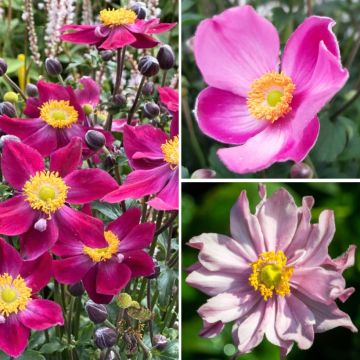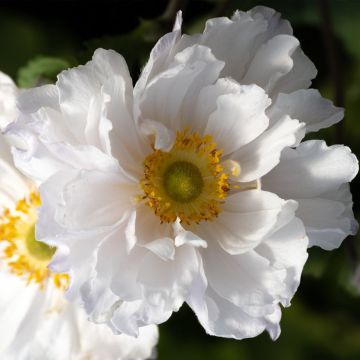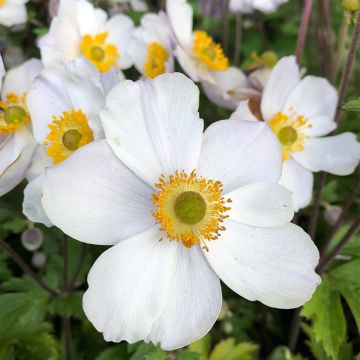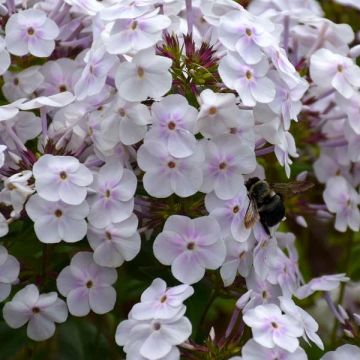

Anemone Little Summer Breeze
Anemone Little Summer Breeze
Anemone Little Summer Breeze
Japanese Anemone, Windflower, Woolly anemone
Pure bliss: a product filled with flowers, it brings joy!
Emmanuel, 20/08/2022
Special offer!
Receive a €20 voucher for any order over €90 (excluding delivery costs, credit notes, and plastic-free options)!
1- Add your favorite plants to your cart.
2- Once you have reached €90, confirm your order (you can even choose the delivery date!).
3- As soon as your order is shipped, you will receive an email containing your voucher code, valid for 3 months (90 days).
Your voucher is unique and can only be used once, for any order with a minimum value of €20, excluding delivery costs.
Can be combined with other current offers, non-divisible and non-refundable.
Why not try an alternative variety in stock?
View all →This plant carries a 12 months recovery warranty
More information
We guarantee the quality of our plants for a full growing cycle, and will replace at our expense any plant that fails to recover under normal climatic and planting conditions.

Would this plant suit my garden?
Set up your Plantfit profile →
Description
The Hybrid Anemone Little Summer Breeze is a compact perennial that offers abundant purple-pink flowering. This elegant plant blooms from July to autumn, producing beautiful flowers on sturdy stems, with open corollas surrounding a large golden yellow stamen. It has undeniable charm and simple beauty that complements other late summer and autumn blooms. It thrives in full sun or partial shade, in moist and rich soil.
The 'Little Summer Breeze' anemone belongs to the Ranunculaceae family. Like other hybrids derived from the Japanese anemone, it is a perennial plant with fibrous 'tubers' that form large, vigorous, and rounded tufts. The foliage is deciduous to semi-evergreen depending on the climate, deeply lobed, dark green, strongly veined on the underside, and hairy.
In this variety, the habit is particularly compact: the plant will not exceed 35 cm (14in) in height, and will be about 30 cm (12in) wide, making it easier to fit into your flower beds compared to its larger counterparts with a more imposing habit. The abundant flowering takes place from July to September, or even October, and is constantly renewed as long as the soil does not dry out too much. The flowers are solitary, on sturdy, upright stems. They first appear as delightful dark pink, oval, and fluffy buds, then open into simple yet delicate, slightly asymmetrical cups, shaded in pink and purple. The golden yellow centre is densely filled with stamens. Anemones can live for years in the same spot, as long as the soil is rich.
The 'Little Summer Breeze' anemone requires a moist to wet soil that is especially well-drained to prevent the roots from rotting. If placed in full sun, the soil must remain consistently moist. In partial shade, it can tolerate short droughts once well-established, at the expense of its flowers. Make sure to find a location that is not too windy, to protect it from cold drafts that could also diminish its appeal in autumn. These plants prefer a rich soil: after a few years, it may be necessary to provide organic fertilizer, but regular mulching with dead leaves will prove very effective.
It will bring life to flower beds from summer to autumn, and can therefore accompany many other late summer blooms such as fuchsia 'Versicolor' , Rabdosia longituba, or late asters such as 'Stardust' Aster ageratoides, 'Beth Chatto' Aster divaricatus, or the New England asters and their numerous varieties. It can also be associated with fine foliage grasses for contrast, for example with Carex morowii 'Ice Dance'. They will also decorate large pots on the terrace from late summer until the first frost, and are excellent as cut flowers.
Report an error about the product description
Anemone Little Summer Breeze in pictures


Flowering
Foliage
Plant habit
Botanical data
Anemone
Little Summer Breeze
Ranunculaceae
Japanese Anemone, Windflower, Woolly anemone
Cultivar or hybrid
Other Japanese Anemones
View all →Planting and care
Japanese anemones grow in partial shade, in a moist, humus-rich, well-drained soil with a loose texture and without too much limestone, where they slowly spread with the help of their underground rootstocks. Plant it in a sheltered spot, away from strong winds, in spring or autumn, spacing them 30 cm (12in) apart. Once the young plants are established, they should not be disturbed. The flowering becomes increasingly abundant as the years go by. In late autumn, cut the flower stems to ground level. Every 2 or 3 years, apply well-rotted compost at the base to enrich the soil, as they are quite demanding.
Planting period
Intended location
Care
-
, onOrder confirmed
Reply from on Promesse de fleurs
Similar products
Haven't found what you were looking for?
Hardiness is the lowest winter temperature a plant can endure without suffering serious damage or even dying. However, hardiness is affected by location (a sheltered area, such as a patio), protection (winter cover) and soil type (hardiness is improved by well-drained soil).

Photo Sharing Terms & Conditions
In order to encourage gardeners to interact and share their experiences, Promesse de fleurs offers various media enabling content to be uploaded onto its Site - in particular via the ‘Photo sharing’ module.
The User agrees to refrain from:
- Posting any content that is illegal, prejudicial, insulting, racist, inciteful to hatred, revisionist, contrary to public decency, that infringes on privacy or on the privacy rights of third parties, in particular the publicity rights of persons and goods, intellectual property rights, or the right to privacy.
- Submitting content on behalf of a third party;
- Impersonate the identity of a third party and/or publish any personal information about a third party;
In general, the User undertakes to refrain from any unethical behaviour.
All Content (in particular text, comments, files, images, photos, videos, creative works, etc.), which may be subject to property or intellectual property rights, image or other private rights, shall remain the property of the User, subject to the limited rights granted by the terms of the licence granted by Promesse de fleurs as stated below. Users are at liberty to publish or not to publish such Content on the Site, notably via the ‘Photo Sharing’ facility, and accept that this Content shall be made public and freely accessible, notably on the Internet.
Users further acknowledge, undertake to have ,and guarantee that they hold all necessary rights and permissions to publish such material on the Site, in particular with regard to the legislation in force pertaining to any privacy, property, intellectual property, image, or contractual rights, or rights of any other nature. By publishing such Content on the Site, Users acknowledge accepting full liability as publishers of the Content within the meaning of the law, and grant Promesse de fleurs, free of charge, an inclusive, worldwide licence for the said Content for the entire duration of its publication, including all reproduction, representation, up/downloading, displaying, performing, transmission, and storage rights.
Users also grant permission for their name to be linked to the Content and accept that this link may not always be made available.
By engaging in posting material, Users consent to their Content becoming automatically accessible on the Internet, in particular on other sites and/or blogs and/or web pages of the Promesse de fleurs site, including in particular social pages and the Promesse de fleurs catalogue.
Users may secure the removal of entrusted content free of charge by issuing a simple request via our contact form.
The flowering period indicated on our website applies to countries and regions located in USDA zone 8 (France, the United Kingdom, Ireland, the Netherlands, etc.)
It will vary according to where you live:
- In zones 9 to 10 (Italy, Spain, Greece, etc.), flowering will occur about 2 to 4 weeks earlier.
- In zones 6 to 7 (Germany, Poland, Slovenia, and lower mountainous regions), flowering will be delayed by 2 to 3 weeks.
- In zone 5 (Central Europe, Scandinavia), blooming will be delayed by 3 to 5 weeks.
In temperate climates, pruning of spring-flowering shrubs (forsythia, spireas, etc.) should be done just after flowering.
Pruning of summer-flowering shrubs (Indian Lilac, Perovskia, etc.) can be done in winter or spring.
In cold regions as well as with frost-sensitive plants, avoid pruning too early when severe frosts may still occur.
The planting period indicated on our website applies to countries and regions located in USDA zone 8 (France, United Kingdom, Ireland, Netherlands).
It will vary according to where you live:
- In Mediterranean zones (Marseille, Madrid, Milan, etc.), autumn and winter are the best planting periods.
- In continental zones (Strasbourg, Munich, Vienna, etc.), delay planting by 2 to 3 weeks in spring and bring it forward by 2 to 4 weeks in autumn.
- In mountainous regions (the Alps, Pyrenees, Carpathians, etc.), it is best to plant in late spring (May-June) or late summer (August-September).
The harvesting period indicated on our website applies to countries and regions in USDA zone 8 (France, England, Ireland, the Netherlands).
In colder areas (Scandinavia, Poland, Austria...) fruit and vegetable harvests are likely to be delayed by 3-4 weeks.
In warmer areas (Italy, Spain, Greece, etc.), harvesting will probably take place earlier, depending on weather conditions.
The sowing periods indicated on our website apply to countries and regions within USDA Zone 8 (France, UK, Ireland, Netherlands).
In colder areas (Scandinavia, Poland, Austria...), delay any outdoor sowing by 3-4 weeks, or sow under glass.
In warmer climes (Italy, Spain, Greece, etc.), bring outdoor sowing forward by a few weeks.



























































